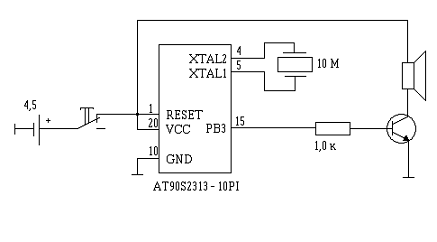

Two Status LEDs | Green LED: Power Supply Indicator | RED LED: For Programmer Busy.The programmer can provide a 5V supply for Target Microcontroller, so No Need for Any External Supply.SCK Option to Support Targets With Low Clock Speed (Support Windows OS (Xp to 10), Mac OS X, and Linux.Allows Read/Write the Microcontroller Flash, EEPROM, Fuse Bit, and Lock Bits.Four 3mm mounting holes for easy mounting.Vcc bus (5V and 12V) & GND bus provided to Give POWER Supply to the External Peripheral.On-board ISP connector for loading HEX file into Microcontroller like AT89S51/52 etc.Port Extensions for all PORT with Detailed Pin Labeling for Easy Identification of Pin.On-Board Input External Interrupt Switch (INT1) at P3.3 through jumper JP2.On-Board Input User Switch P3.3 through jumper JP2.On-Board GREEN USER LED connected to P2.0 through jumper JP3.On-Board 5V regulator (LM7805) circuit.On-board MAX232 Interface Circuit for Easy Communication with a PC & other RS232 serial devices (GPS modules, GSM Modems, etc).AVR 8051 USB ISP Programmer Supports ATmega 8/328, 16, 32 & many others including 8051 with the same Programmer.USB Programmer can be used for both 8051 & AVR IC (2in1).ZIF Socket Protect Your Microcontroller From Damage.DIP 40 Pin ZIF (Zero Insertion Force) Socket. For Easy Insert/Remove of IC.In the setup, the LCD is initiated with lcd.init() and the backlight is turned on with lcd.backlight().For Industrial Research Design | Low Cost | Project Development DIY 8051 Board: Connect to LCD via I2C, default address 0x27 (A0-A2 not jumpered) You will need to change ‘lcd’ to the new name in the rest of the sketch. You can give it a different name if you want like ‘menu_display’. Note that we have called the display ‘lcd’. When using a 20×4 LCD, change this line to LiquidCrystal_I2C(0x27,20,4) This is where you will need to change the default address to the address you found earlier if it happens to be different. The next step is to create an LCD object with the LiquidCrystal_I2C class and specify the address and dimensions.įor this, we use the function LiquidCrystal_I2C(address, columns, rows). #include // Library for I2C communication

The other library imports wire.h automatically. *When using the latest version of the LiquidCrystal_I2C library it is no longer needed to include the wire.h library in your sketch. In the rest of this tutorial, I will cover more of the built-in functions of this library.

As mentioned earlier we need both the wire.h* and the LiquidCrystal_I2C library. First, the required libraries are included.


 0 kommentar(er)
0 kommentar(er)
